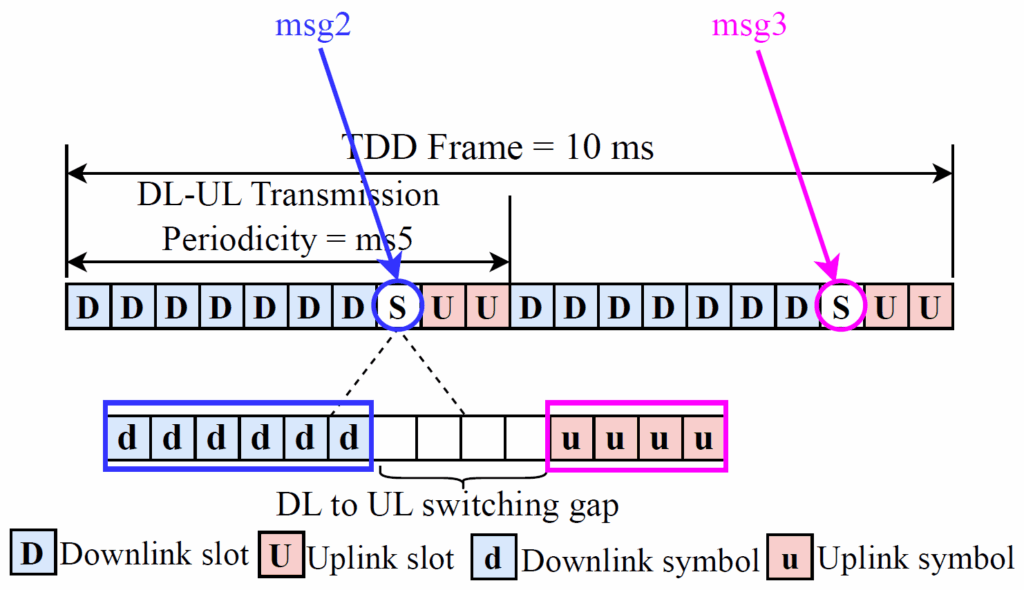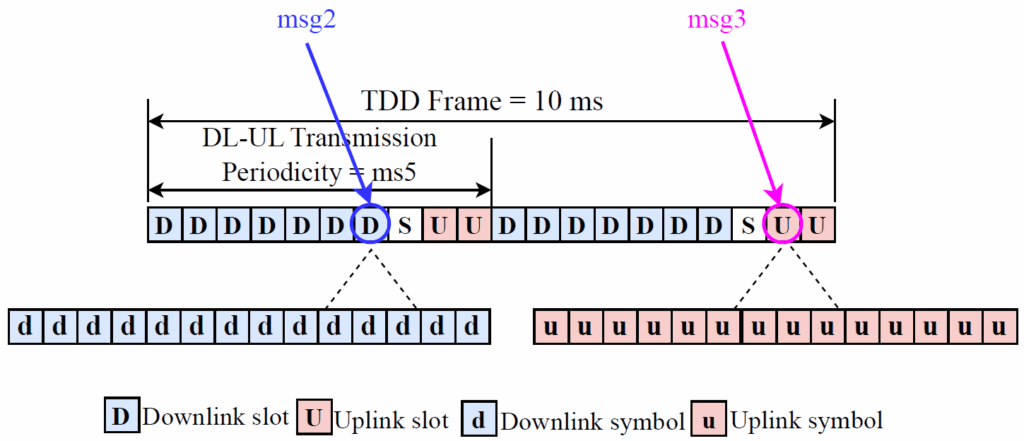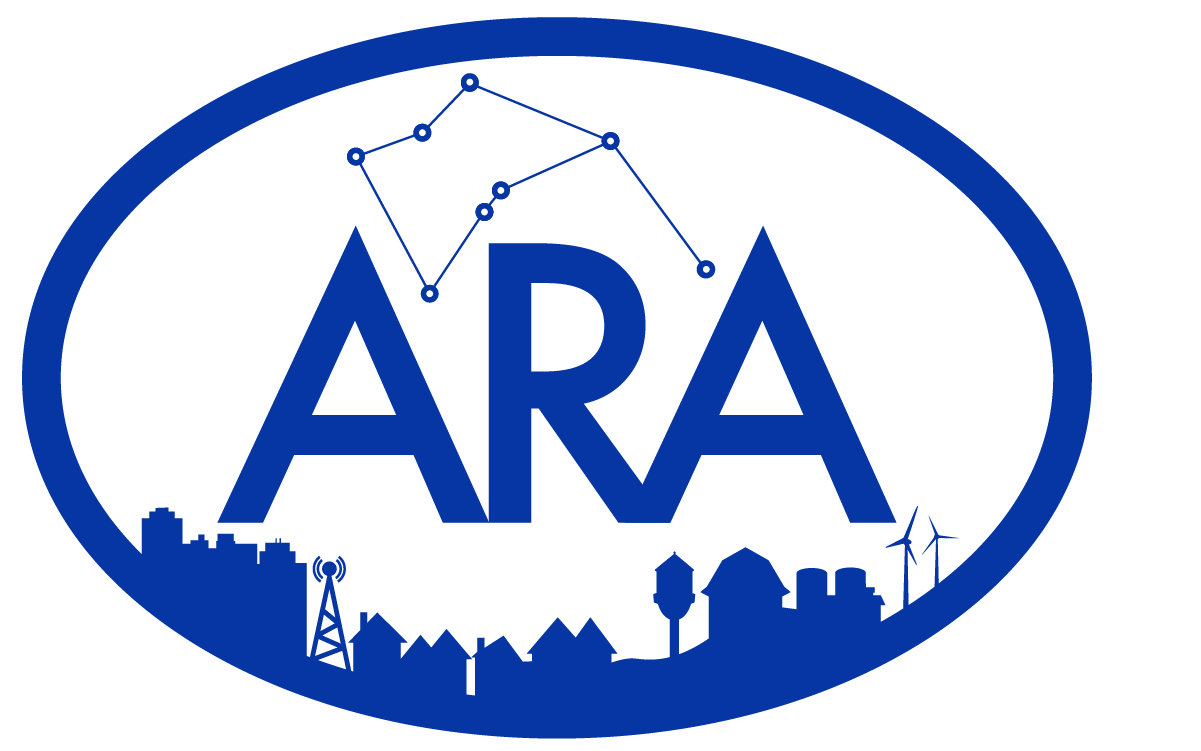Author: Joshua Ofori Boateng
The Center for Wireless, Communities and Innovation (WiCI) at Iowa State University has taken a significant step forward in improving the coverage and reliability of next generation random access (RA) procedure with the development of AraRACH: Enhancing NextG Random Access Reliability in Programmable Wireless Living Labs. By leveraging real‑world data from the ARA wireless living lab, they devised a slot‑based scheduling framework that reschedules RA messages into full downlink and uplink slots, unlocking all 14 OFDM symbols for each message to overcome reliability issues in large‑scale outdoor 5G/6G deployments. This work was recently honored with the Best Paper Award at the 2025 IEEE International Conference on Network Softwarization (NetSoft), and this work has enabled ARA to become the first-of-its-kind living lab for supporting open-source, whole-stack programmability in end-to-end 5G research and innovation from UE to gNB and Core.
Open source 5G/6G software stacks such as OpenAirInterface (OAI) have unlocked unprecedented flexibility for 5G and next generation wireless research and innovation. However, at the core of this innovation is the performance in terms of coverage and reliability of these wireless living labs. For instance, interfacing power amplifiers and low noise amplifiers with software-defined radios (SDRs) for experimenting outdoors introduces issues in random access procedure—a process crucial in establishing connectivity between user equipment (UE) and the core network in 5G and 6G systems.
Particularly, open-source 5G software stacks like OAI are faced with two major random access (RACH) procedure challenges in real-world and large-scale deployments–timing and reliability. In terms of timing, the RACH procedure fails due to the lack of precise TDD synchronization between the software stack and the amplifier within the special slot (S). For instance, the default OAI DL-UL switching occurs at the end of the last DL slot. However, as shown in Fig.1, the DL to UL switching gap must follow the last DL symbol within the special slot. Consequently, msg2 (a DL message) which is scheduled in a special slot fails to be transmitted due to amplifier being in the receive/uplink mode at the start of the special slot. This consequently causes the RACH procedure to fail. Also shown in Fig.1, OAI by default leverage a few symbols within the special or mixed slot to schedule msg2 and smg3. For instance, 6 downlink symbols and 4 uplink symbols are used to schedule msg2 and msg3 respectively. Such configuration causes the RACH procedure to fail over longer UE-gNB distances, consequently affecting reliability. We present AraRACH to jointly tackle both timing and reliability issues related to open source 5G RACH procedure. As shown in Fig. 2, AraRACH schedules RA response message (msg2) with a full downlink slot and radio resource control (RRC) connection request message (msg3) with a full uplink slot, granting each message access to all 14 OFDM symbols. This approach solves the timing issue which exists in the special slot, improves message coding rates by leveraging more OFDM symbols, and eventually improves msg2 and msg3 reliability over longer distances and under varying channel conditions.


The ARA wireless living lab played a pivotal role in validating AraRACH. Spanning a 30 km‑diameter area in central Iowa and consisting of 7 software-defined radio gNBs and 30 UEs, including deployments in crop and livestock farms, grain bins, residential and industrial sites, ARA allowed real‑world experiments in both line‑of‑sight (LoS) and non‑LoS (nLoS) conditions. Researchers provisioned radio and compute resources via the ARA Portal and launched containerized OAI experiments for reproducible and scalable trials.
Results demonstrated that AraRACH extends reliable 5G connection over unprecedented ranges: successful UE attachments were achieved at distances exceeding one mile, the longest to date using open‑source 5G software stacks on a programmable wireless living lab. Msg2 reception probability exceeded 90% whenever scheduled with at least eight to nine OFDM symbols, while msg3 reception probability remained above 80% even at one‑mile ranges when allocated eleven or more symbols.
By proving end‑to‑end, open‑source 5G research and prototyping is viable in large‑scale outdoor environments, AraRACH lays a blueprint for improving the performance of open source 5G, 6G and open RAN field deployments worldwide. Future work will focus on automating SLIV selection based on in-situ channel conditions, extending the approach to emerging 6G RA schemes, releasing the AraRACH datasets and code to foster community-driven reproducibility, and contributing the source code of AraRACH back to the OpenAirInterface open-source community.
Author’s Background
Joshua Ofori Boateng is a Ph.D. candidate in Computer Engineering at Iowa State University and a graduate researcher at the Center for Wireless, Communities and Innovation (WiCI), where he works under Profs. Hongwei Zhang and Daji Qiao on the ARA platform. He co‑designed the ARA wireless living lab testbed, contributing to publications such as “Design and Implementation of ARA Wireless Living Lab for Rural Broadband and Applications” and “AraSDR: End‑to‑End, Fully‑Programmable Living Lab for 5G and Beyond.” Joshua holds a bachelor’s degree in Telecommunications Engineering from Kwame Nkrumah University of Science and Technology, Ghana, and his research focuses on open‑source NextG wireless platforms, Open RAN, and virtualization of software-defined radio platforms. To date, he has published 10 peer‑reviewed papers and has over 100 citations.
